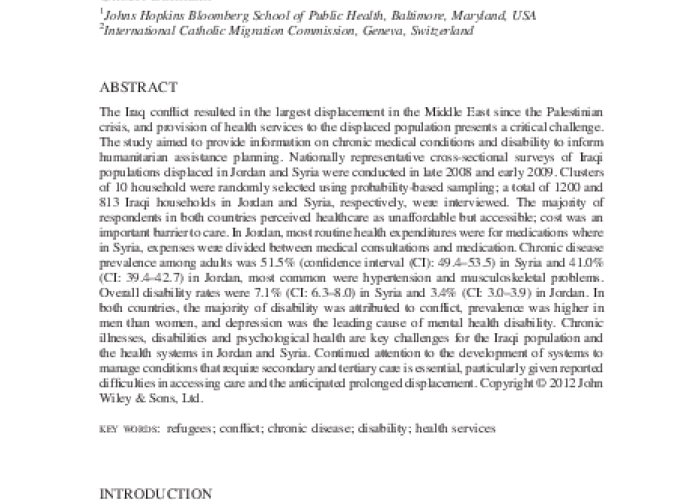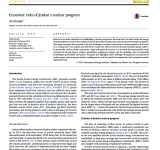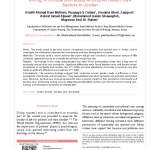Chronic Disease and Disability among Iraqi Populations Displaced in Jordan and Syria

The Iraq conflict resulted in the largest displacement in the Middle East since the Palestinian crisis,and provision of health services to the displaced population presents a critical challenge.The study aimed to provide information on chronic medical conditions and disability to inform humanitarian assistance planning. Nationally representative cross-sectional surveys of Iraqi populations displaced in Jordan and Syria were conducted in late 28 and early 29. Clusters of 1 household were randomly selected using probability-based sampling; a total of 12 and813 Iraqi households in Jordan and Syria,respectively,were interviewed. The majority of respondents in both countries perceived healthcare as unaffordable but accessible; cost was an important barrier to care. In Jordan,most routine health expenditures were for medications wherein Syria,expenses were divided between medical consultations and medication. Chronic disease prevalence among adults was 51.5% (confidence interval (CI): 49.4–53.5) in Syria and 41.% (CI: 39.4–42.7) in Jordan,most common were hypertension and musculoskeletal problems.Overall disability rates were 7.1% (CI: 6.3–8.) in Syria and 3.4% (CI: 3.–3.9) in Jordan. In both countries,the majority of disability was attributed to conflict,prevalence was higher in men than women,and depression was the leading cause of mental health disability. Chronic illnesses,disabilities and psychological health are key challenges for the Iraqi population and the health systems in Jordan and Syria. Continued attention to the development of systems to manage conditions that require secondary and tertiary care is essential,particularly given reported difficulties in accessing care and the anticipated prolonged displacement.


